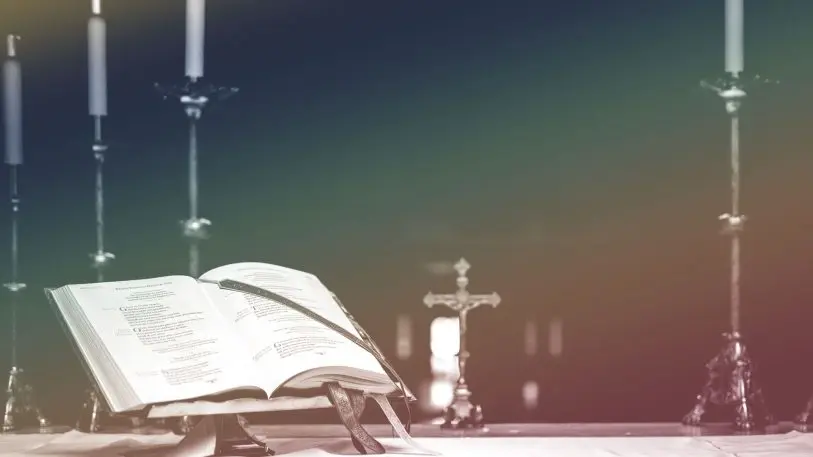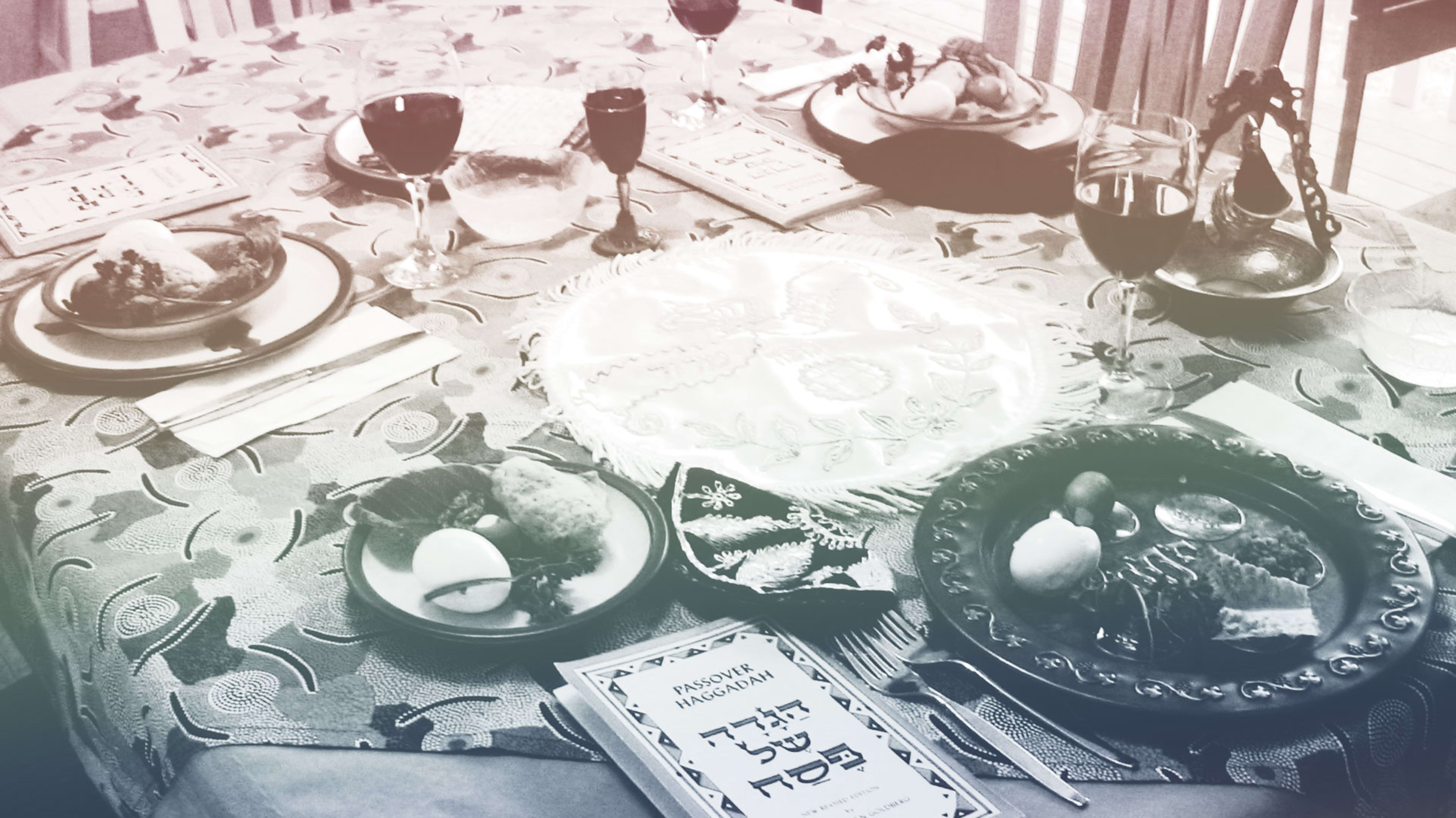This month, religious observers typically gather for holy celebrations and spring rites. Unfortunately, during a time of nationwide stay-at-home orders and social distancing, celebrating Easter and Passover looks very different this year.
Passover, which began Thursday at sundown, celebrates the idea of freedom, building off the Jews’ exodus from Egypt. Likewise, Easter, which falls on Sunday, is recognized for its themes of rebirth.
Passover is characterized by the preparation of the Seder dinner, celebrated in accordance with a new season. Seders are highly detailed and typically require specific materials—from a shank bone to matzo—each with its own religious significance. Seder also marks an important time for families and communities to come together.
“It’s a time of year when people are accustomed to being with family, being able to enjoy the core of this holiday, which is the transition of the seasons,” says Rabbi Jesse Paikin of Sixth & I, a synagogue and cultural center in Washington D.C. “The inability to do these things right now is certainly painful, sad, and disruptive.”
Passover is the most widely observed Jewish ritual in North America, Rabbi Paikin points out. The empty space left by a lack of in-person Passover activities is more than a disruption. “People who celebrate Passover look to the Jewish calendar as the rhythm of their lives.”
To bridge the gap, many spiritual centers are turning toward new resources, especially virtual tools. Sixth & I prepared a digital guide on how to hold a remote Seder, with helpful engagement tips and recipes, as well as a complete video of a virtual Seder for its congregants.
Some religious leaders say the history of each religion can offer a source of strength and clarity during this time of instability. “This is not the first Passover that has taken place in a moment of turbulence and uncertainty,” says Rabbi Paikin. “Jews have always responded to moments of difficulty, strife, and depression, with optimism and hope. It’s a message at the core of the Passover holiday itself, a holiday that looks to the future with hope for redemption and freedom. It’s eerie how timely that message is right now.”
Christian churches are also getting inventive. The Cathedral Church of Saint John the Divine in New York offers videos and scripture readings of their weekly hymns and sermons via a virtual organist and clergy member.
“All of the readings leading up to Easter are about rebirth, life in the midst of death, and hope when things seem the most bleak,” says Father Malloy, a reverend at the church. “There’s just no avoiding the fact that the themes are so tightly linked. How we find ourselves trapped, and how sickness and death are surrounding us. These spring holidays are a great opportunity to ask ourselves the serious questions about finding life and rebirth in the midst of death, and hope in the midst of what seems hopeless.”

Opening arms to virtual connection
This spring, many congregants find themselves propped up behind laptops, streaming sermons, participating and chatting in video meetings. Saint John the Divine also offers virtual Bible studies and Sunday afternoon coffee “hang-outs,” all recorded and/or executed remotely. “Everyone now finds himself or herself in the same boat,” says Father Malloy. “As awful as this all is, people are learning new ways to be together.”
Rabbi Paikin holds morning mindfulness and meditation sessions starting at 8 a.m. Often 40-50 people log on, many of whom are not synagogue regulars. “It is remarkable,” he says, adding the digital resources, such as step-by-step manuals, online coursework, and meditation videos, are widely shared and often visited by those who are not necessarily religious. “We’re really reaching a wider community—D.C. and beyond—who are interested in looking for these moments of spiritual nourishment, optimism, and hope,” says Rabbi Paikin. “It doesn’t cost us anything extra to open our doors.”
For many Jews, disconnecting from technology is a weekly Shabbat ritual. But in the last few weeks leading up to Passover, many stringent Orthodox groups are allowing the use of video meeting apps, such as Zoom, to uphold the community aspect of the holiday, according to The Jerusalem Post.
Accepting a new reality
Rabbi Paikin says he is trying to help open up channels of communication. “One thing I, our rabbis, and everyone who represents a spiritual home for people, are trying to do is be present for people in any way we can. We want to acknowledge the difficulty of the moment, and respond to it on a human level.”
With the unpredictable nature of the crisis weighing on everyone, taking a beat to breathe and focus on healthy habits can prevent individuals from overextending themselves. The rabbi stresses doing the best for yourself, first. “I encourage people to go easy on themselves. It’s a holiday that takes a lot of preparation. Remember, the Seder doesn’t have to be exactly the same as last year—you can scale down and go a little easier.”
Promoting spirituality and connection
“It’s been fascinating for me to realize that students I never would have interacted with before are engaging with my religious video chats,” says Adam Kirtley, the Interfaith Chaplain at Whitman College, a small liberal arts college in Washington State. “In this time of uncertainty and upheaval, there is a sense that people who are not spiritual or do not practice religion are finding value in spirituality.”
Whitman College, located to the southeast of Seattle, an early coronavirus hot spot, caters to a student body of all religious backgrounds, including a small Muslim population. “I think there is a feeling of grief from students. There’s sadness over the prospect of entering into the Ramadan season, where they’re very underrepresented,” says Kirtley. “Along with the thorny logistics of getting meals, it’s going to be a really challenging time.”
This heightened need for connection and coping mechanisms by anxious undergrads, many of whom ended their semester with remote classes and without in-person graduation ceremonies, is mirrored in other communities.
At the Sixth & I, though the core demographic typically skews young—around 20 to 30 years old—the synagogue is seeing a widespread need for community from people of all ages. “People are looking forward to these opportunities. They’re learning about a desire that was already there—to naturally want to be together and reinforce life’s meaning,” Rabbi Paikin says.
Many parishioners and religious leaders alike are thinking about when they will be able to meet in person again. “I miss being able to gather with the people of my congregation every week,” Father Malloy says. “When we finally are able to get back into a room together, it’s going to be an unbelievably joyous moment.”
Recognize your brand’s excellence by applying to this year’s Brands That Matter Awards before the early-rate deadline, May 3.
